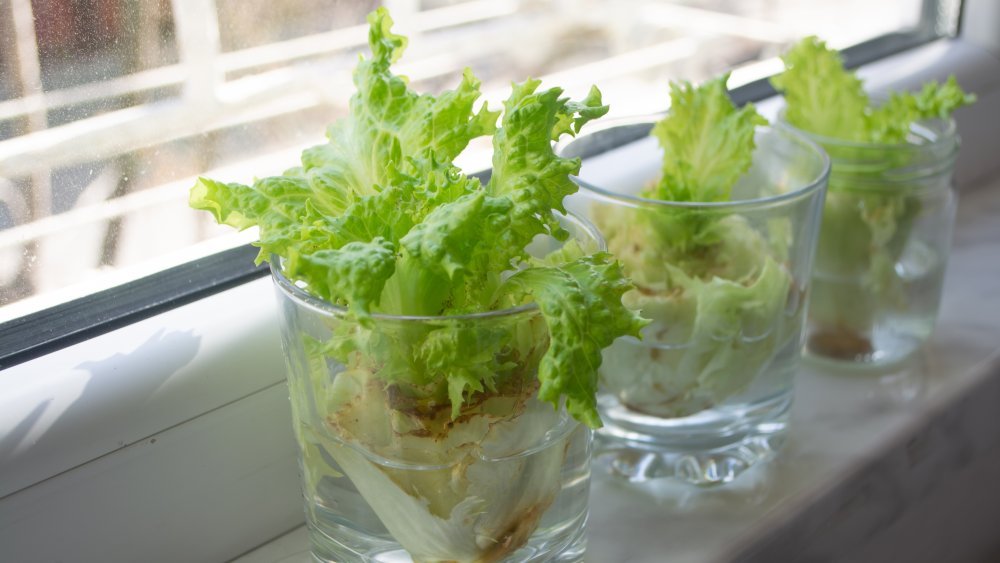The Truth About Regrowing Vegetable Scraps
Whether you can't get to the store, are looking to pinch pennies, or just want to enjoy the process of growing your own produce, why not repurpose whatever vegetables and herbs you can find in the kitchen, encouraging regrowth through scraps you'd otherwise throw away?
For example, green onions and other vegetables, like romaine lettuce, bok choy, cabbage, leeks, and carrot-top greens, are renowned for their powers of regeneration — just add to a container of water and watch 'em come alive. Herbs, including cilantro, basil, or mint, also revive in water, though they need to be planted in soil after their roots develop; other favorites, like potatoes and even the more time-consuming (but exotic) pineapple, can be planted in soil directly.
Of course, there's always the option of planting the seeds found inside your fruits and vegetables — citrus fruits, hot peppers, red (not green) peppers, melons, tomatoes, and squash, among others (via Empress of Dirt). But there are plenty of vegetables that can regenerate from scraps alone, no seeds required.
You can successfully reharvest vegetables from scraps
According to Food52, some vegetables can be regrown with just "one week of water and sunshine": Fennel bulbs can be placed in one inch of water to sprout new fronds, while the base of celery can be placed in shallow water and later introduced to soil. Garlic scapes (wispy greens that look like chives) can develop from a single garlic clove that has been planted, and lemongrass stems can grow roots in water for planting in only two to three weeks.
Meanwhile, Empress of Dirt adds that other herbs can regrow their roots indoors, such as lemon balm, oregano, parsley, sage, and thyme, while root vegetables (think beets, parsnips, radishes, rutabagas, and turnips) and bulbs like onions and shallots will sprout edible leaves. Whole plants can grow from sweet potatoes, cassava, and yams that have sprouted eyes.
Even mushroom stems will (with a little luck) regrow when stuck into soil, and ginger roots can initiate full plants after several months' time — or, if you have several years, try growing an avocado tree by planting a single pit (via BuzzFeed).
To get the most out of your new growths, Empress of Dirt recommends choosing organic varieties if possible and keeping in mind the best conditions for growing. But, hey, even if the process doesn't go exactly as planned, you haven't sacrificed anything except a little time and a few scraps that were destined for the trash or compost pile anyway!

